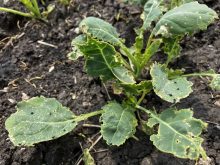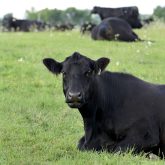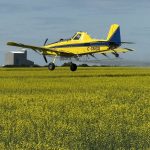After cuts to AgriStability five years ago, then Keystone Agricultural Producers (KAP) president Doug Chorney predicted “AgriStability will be losing support… from farmers because it really has got to be questionable if you’ll ever see a payment.”
He was right. Participation is down.
In 2013, there were 7,015 Manitoba farmers enrolled in the federal-provincial ‘business risk management’ (BRM) program, Manitoba Agriculture says. In 2015, the most recent year for statistics, enrolment fell to 5,867 — a decline of 1,147 or almost 16 per cent.
During the same period AgriInvest enrolment in Manitoba dropped just three per cent.
Read Also

First Manitoba hay harvest short
Manitoba’s first hay cut of 2025 isn’t huge by initial counts, but things are worse farther west in the Prairies
Despite declining enrolment and five years of lobbying, Canada’s agriculture ministers didn’t agree to big AgriStability changes at their annual meeting in St. John’s, Nfld. July 19 to 21.
- Read more: Farm support programs undergo changes
- Read more: Income support programs not working for farmers
However, they did agree to a comprehensive review of BRMs, including AgriStability, with possible changes being implemented April 1, 2019. With a proviso — no additional cost.
That’s a tall order. A big part of AgriStability’s weakness stems from a reduction in coverage, boiling down to less government funding.
What about shifting funds from other support programs?
“That’s all part of the conversation I would say, but that’s not really where we are trying to go,” Manitoba Agriculture Minister Ralph Eichler said in an interview July 27. “But if that’s where we need to go then certainly we need to be clear about what that direction would look like.
“We heard from the producers loud and clear that it (AgriStability) must be supportive and predictable and sustainable.”
The new Canadian Agricultural Partnership (CAP) agreed to by ministers is a five-year, $3-billion deal replacing Growing Forward 2.
AgriStability evolved from a long line of previous farm programs. Even before 2013 farmers criticized AgriStability’s complexity. Farmers also complain AgriStability support is unpredictable.
Disaster relief or income stabilizer?
As of April 1, 2013, KAP says AgriStability became a disaster relief scheme instead of an income stabilization program.
Two major changes occurred. One was AgriStability payments were triggered when a farmer’s reference margin fell below 70 per cent instead of the original 85.
The change came at a time when grain farmers were earning good returns and building margins. That translated into more potential liability for federal and provincial governments when farm revenues declined.
Some industry watchers say Ottawa was worried without changes, AgriStability payouts could be triggered when farmers were still profitable.
Gerry Ritz, the federal agriculture minister back then, said AgriStability needed to evolve and hinted at a more laissez faire approach.
“We must make sure that the programs in place make sense not only for today, but are foundational for five or 10 years from now,” Ritz told reporters Sept. 14, 2012. “The programs… must not hold us back or mask market signals.
“BRM program reform… should create space for the development of private risk management tools.”
It didn’t happen.
But the other change, which Chorney predicted would be more costly to farmers, was basing payments on either farmers’ reference margins or their allowable expenses, whichever was lower.
Allowable expenses cover only 60 to 70 per cent of farmers’ operating costs and are usually lower than their reference margins. The result, he predicted, would be lower payments, if any were triggered.
Farmers who self-insure through diversification are even less likely to get an AgriStability payment, KAP vice-president Bill Campbell said July 13 at an advisory council meeting. He suggested such farmers get higher coverage and/or lower premiums as a reward.
Starting April 1, 2018, the AgriStability reference margin limit (RML) will be capped to ensure a more equitable level of support for all producers, the ministers said in a news release.
“The change… will ensure producers from all sectors will have improved access to support under the program, regardless of their cost structure,” the release said.
KAP says it needs more details to know for sure.
The committee of farmers and experts assembled to review farm support programs will be looking to reform AgriStability, not to scrap it and start over, Eichler said. He has ideas on how to improve it, and raised them with fellow ministers, but declined to share them publicly.
“I don’t want to lead the conversation at this point,” he said, adding he knows what Manitoba farmers want following extensive consultations.
“The bottom line is government needs to be there for the producers,” Eichler said. “That’s really the key thing… I’m not a big fan of ad hoc programs, but government needs to be there for the producers if something is not working.”
Nor is he a fan of a new provision allowing late AgriStability enrolment with a penalty. KAP president Dan Mazier said if AgriStability worked better for farmers, late enrolment wouldn’t be needed. Eichler agrees.
It was a compromise, Eichler said. And as one industry observer said, for most governments, it’s more desirable than ad hoc assistance.
“Did we get everything we wanted? No we didn’t,” Eichler said. “Did we get a pretty good agreement? I think we did.”
Meanwhile, KAP is hoping the best is yet to come.
It’s hard to see though how the circle will squared. AgriStability doesn’t pay out as much or as often. That is saving governments money, but according to KAP, it’s not serving farmers well. However, even if governments were prepared to spend more, they’d have to tread lightly to avoid making AgriStability a potential trade irritant.
And it’s not just trade. Farm supports must strike a balance between assisting farmers when incomes fall without distorting or masking market signals. They also need to provide a backstop to risk, while not encouraging recklessness.




















